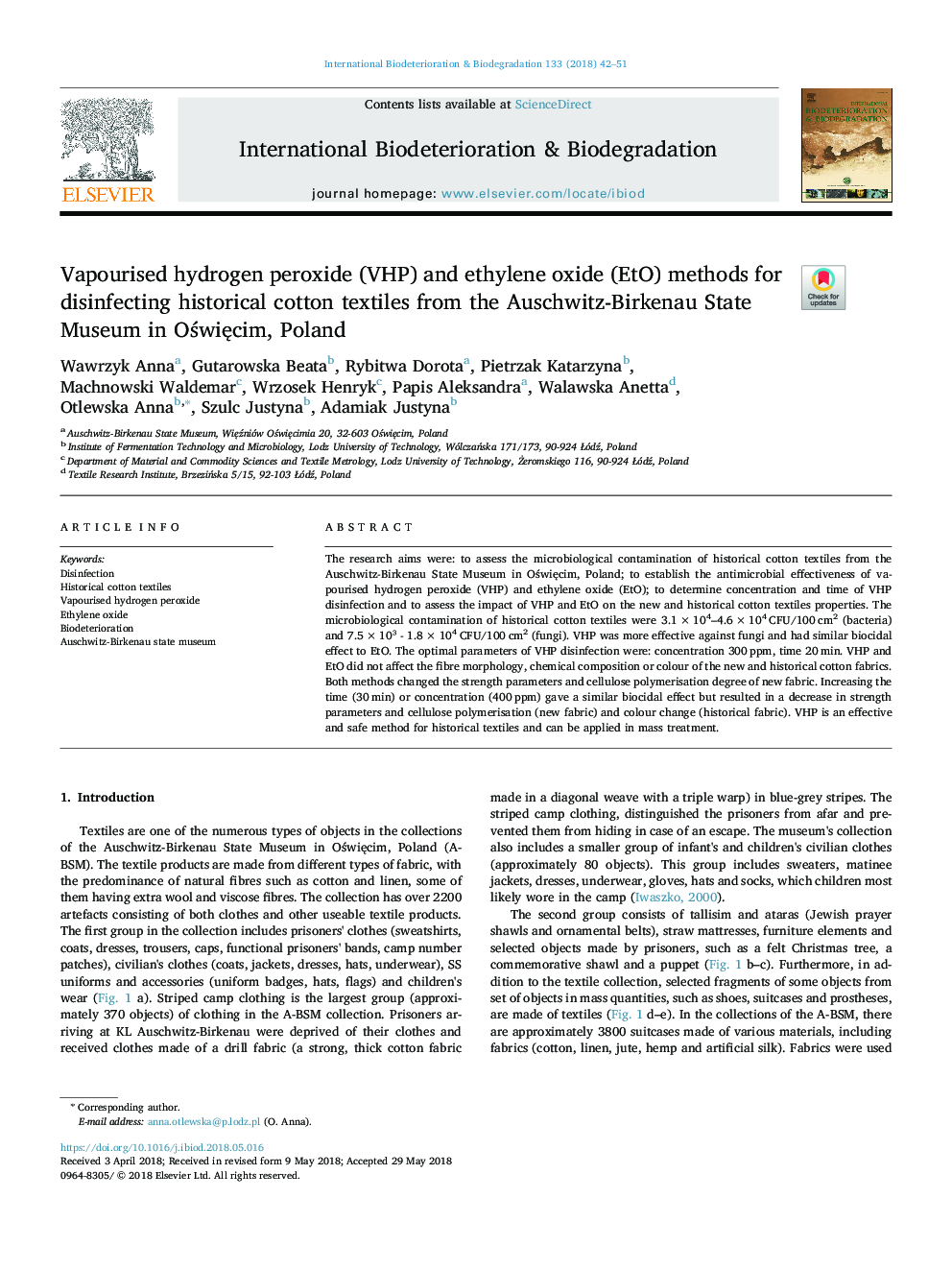| Article ID | Journal | Published Year | Pages | File Type |
|---|---|---|---|---|
| 8843677 | International Biodeterioration & Biodegradation | 2018 | 10 Pages |
Abstract
The research aims were: to assess the microbiological contamination of historical cotton textiles from the Auschwitz-Birkenau State Museum in OÅwiÄcim, Poland; to establish the antimicrobial effectiveness of vapourised hydrogen peroxide (VHP) and ethylene oxide (EtO); to determine concentration and time of VHP disinfection and to assess the impact of VHP and EtO on the new and historical cotton textiles properties. The microbiological contamination of historical cotton textiles were 3.1â¯Ãâ¯104-4.6â¯Ãâ¯104â¯CFU/100â¯cm2 (bacteria) and 7.5â¯Ãâ¯10³ - 1.8â¯Ãâ¯104â¯CFU/100â¯cm2 (fungi). VHP was more effective against fungi and had similar biocidal effect to EtO. The optimal parameters of VHP disinfection were: concentration 300â¯ppm, time 20â¯min. VHP and EtO did not affect the fibre morphology, chemical composition or colour of the new and historical cotton fabrics. Both methods changed the strength parameters and cellulose polymerisation degree of new fabric. Increasing the time (30â¯min) or concentration (400â¯ppm) gave a similar biocidal effect but resulted in a decrease in strength parameters and cellulose polymerisation (new fabric) and colour change (historical fabric). VHP is an effective and safe method for historical textiles and can be applied in mass treatment.
Related Topics
Life Sciences
Environmental Science
Environmental Science (General)
Authors
Wawrzyk Anna, Gutarowska Beata, Rybitwa Dorota, Pietrzak Katarzyna, Machnowski Waldemar, Wrzosek Henryk, Papis Aleksandra, Walawska Anetta, Otlewska Anna, Szulc Justyna, Adamiak Justyna,
